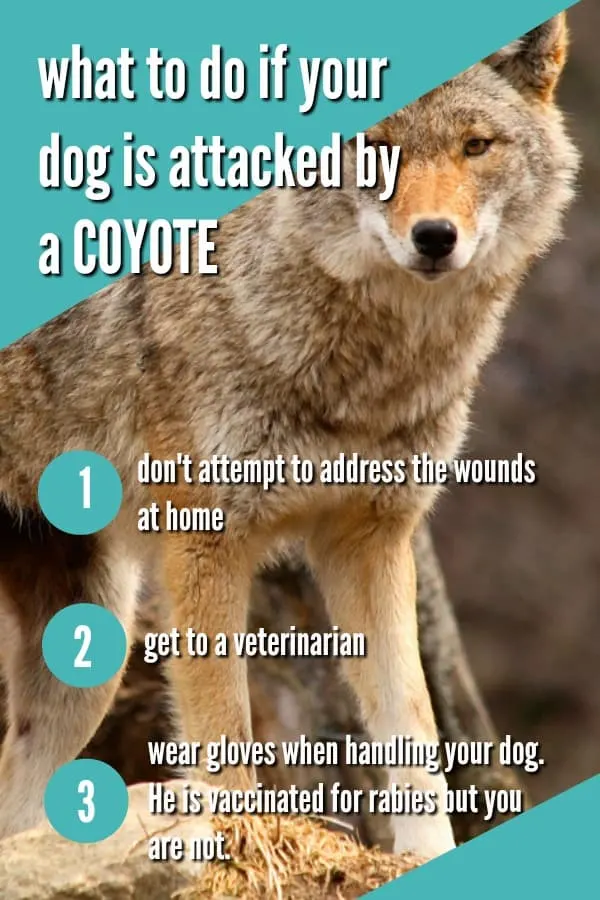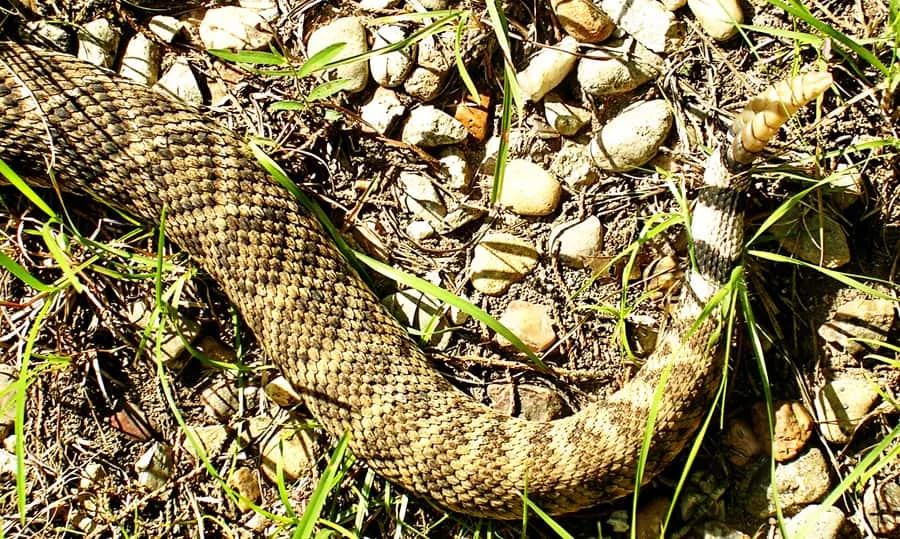Whether you’re at home or traveling the Lone Star State, Texas has some hazards for you and your dog. Here’s a rundown of some of the top natural dangers your dog will face on your adventures:
Coyotes

As in many parts of the country, the coyote population has grown in recent years in Texas. Campers are urged to never leave a dog outside a tent at night when coyotes can attack. Daytime sightings are usually rare but, at night, coyotes will come close to look for a meal.
Venomous Snakes

Texas is home to venomous rattlesnakes, copperheads, water moccasins, and coral snakes. While these are typically shy creatures and would prefer to flee rather than bite, be wary when hiking with your dog. Don’t let your dog put his nose in rocky ledges, beneath logs, or in holes on the river bank. If dog is bitten, seek veterinary attention immediately.
Alligators

If you’re vacationing in East Texas or near the coast, please keep an eye out for alligators. Don’t let your dog swim in waters where alligator signs are posted and don’t walk your dog along the shoreline at dawn or dusk.
Creepy Crawlies

The state is also home to several nasty crawly creatures such as scorpions, tarantulas, and fire ants. And Africanized bees—killer bees—aren’t just the stuff of horror movies but a real problem. They typically nest in hollow trees and have been known to attack the sources of loud noise: chainsaws, lawn mowers—and barking dogs. Less glitzy but just as troublesome: fleas and ticks, both a year-around threat.
Flash Floods

Flash flooding is another problem that literally sneaks up on many travelers. The rocky conditions in the Hill Country and western portions of the state mean that rains will run off quickly and flood what minutes earlier may have been a dry creek bed. Some parks, like Pedernales Falls State Park near Austin, have sirens to warn travelers to get away from the river when a flash flood approaches but most of the time you’ll be on your own to know when you and your dog need to get away from the water. Low water crossings kill many travelers every year as they attempt to drive across roads covered in water. “Turn around, don’t drown” is the NOAA weather campaign to urge travelers not to try to drive across flooded roads.
Mosquitoes
But the two most common hazards are perhaps the least exotic: heat and mosquitoes. Mosquitoes can be the most annoying insects during warm-weather months; pack dog-safe repellent for both you and your dog and make sure your dog is current on heartworm preventative, no matter what time of the year you visit. Heartworm can be contracted in the middle of the winter in this state so you definitely need for your dog to be current on preventative before you arrive. (Similarly fleas and ticks can be a year-around issue.)
Texas Heat
And although it’s commonplace, heat remains the most deadly problem in Texas. Heat exhaustion and heat stroke are risks for both you and your dog, especially for brachycephalic (short-nosed) dogs like bulldogs and pugs that have a more difficult time panting to cool their body temperature. Cool, fresh water is important to provide your dog frequently on your outings. And don’t forget that your dog is much closer to the hot pavement than you are and, unless you put protective booties on him, is always barefoot. Unless you’d feel comfortable walking on the pavement in bare feet, please keep your dog off the pavement.
NEVER leave a dog in the car in Texas. Temperatures can soar and your car can turn into an oven in the time it takes you to go in and order lunch. Many dogs die ever year in cars that their owners thought would be a comfortable place for them to wait.
For more on traveling in Texas with your dog, don’t miss our DogTipper’s Texas with Dogs guidebook!
